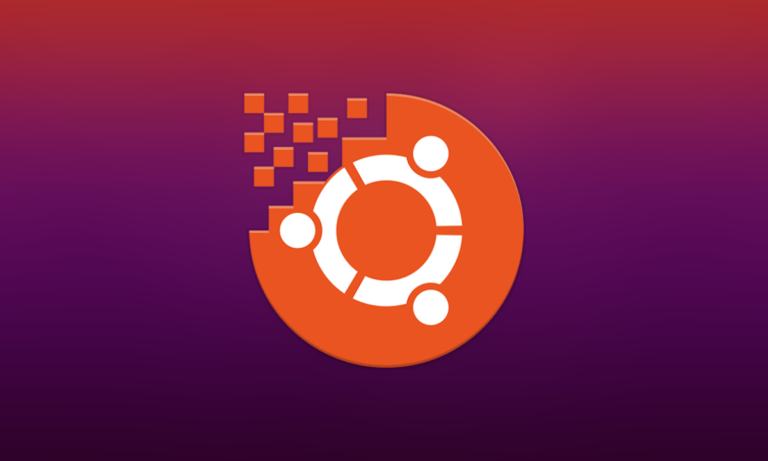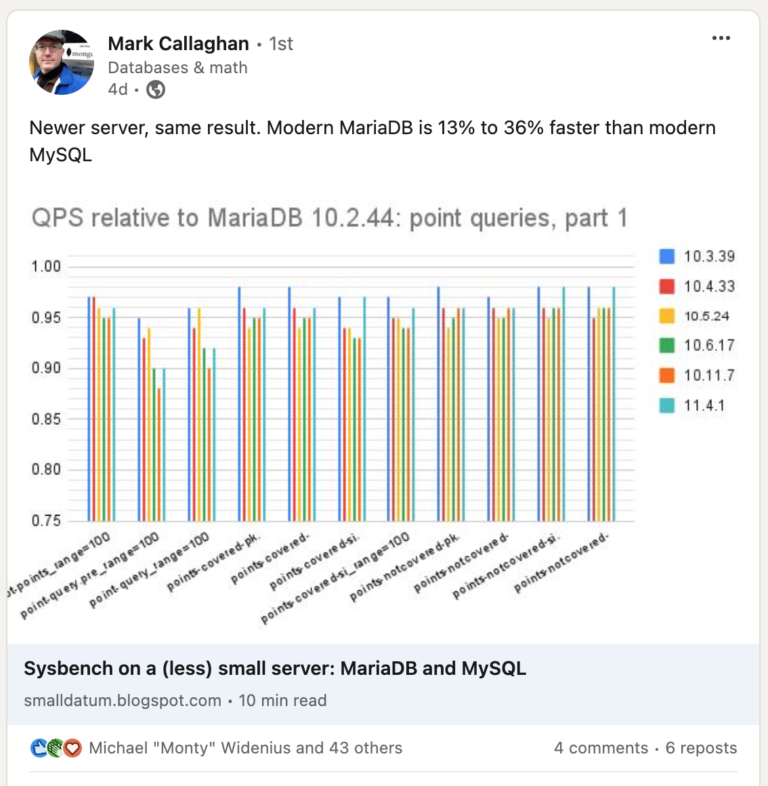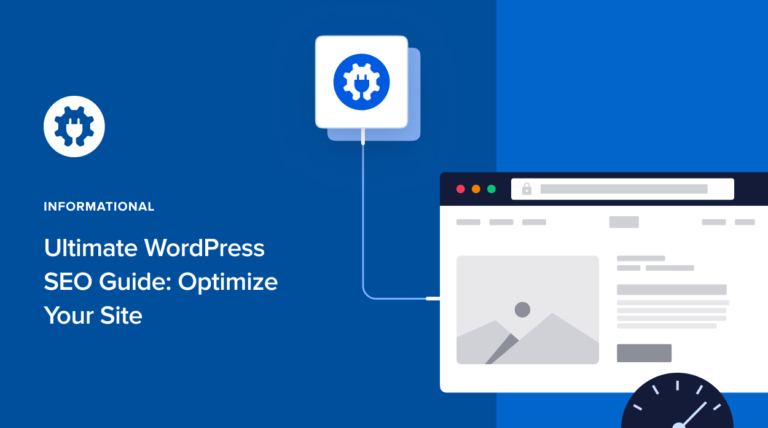Curious about the software development life cycle (SDLC)? Wondering why it’s so important in the world of software development?
In this article, we’ll explore the different phases of SDLC, from planning to maintenance. We’ll also delve into the various models of SDLC, including the Waterfall Model and Agile Model.
We’ll discuss the advantages and disadvantages of SDLC, such as better planning and control, improved quality of software, and limited user involvement. Let’s get started!
Key Takeaways:
What is SDLC?
Software Development Life Cycle (SDLC) is a structured process that outlines the steps necessary to design, develop, test, and deploy high-quality software products.
SDLC encompasses several distinct phases that guide the software development team through the entire project. These phases typically include Planning, Analysis, Design, Development, Testing, Implementation, and Maintenance. Each phase has specific objectives and deliverables that contribute to the overall success of the project.
- The Planning phase involves defining the project scope, requirements, and timelines.
- In the Analysis phase, the team analyzes the requirements gathered and defines system functionalities.
- Design phase focuses on creating a blueprint of the software architecture and interface.
- Development phase involves actual coding and building of the software product based on the design specifications.
- Testing phase ensures that the software meets quality standards through various testing methods.
- Implementation phase involves deploying the software into the production environment.
- Maintenance phase is about providing ongoing support, updates, and enhancements to the software.
Why is SDLC important?
SDLC is essential in software development as it provides a roadmap for understanding user needs, designing efficient solutions, and ensuring the delivery of software that aligns with customer requirements.
By following a structured SDLC process, software teams can engage in meticulous requirements analysis to precisely capture what the end-users desire. This helps in creating a foundation for all the subsequent development phases, ensuring that the software addresses the crucial aspects of functionality and usability. The emphasis on early design phases within SDLC enhances efficiency by identifying potential bottlenecks or challenges early on, leading to cost-effective resolution. This proactive approach not only streamlines the development process but also significantly contributes to overall customer satisfaction through the creation of tailored, reliable software solutions.
What are the Phases of SDLC?
The phases of SDLC encompass Planning, Analysis, Design, Implementation, Testing, Deployment, and Maintenance, each playing a crucial role in the software development lifecycle.
During the Planning phase, the primary objective is to define the project scope, timeline, and resources required. Analysis involves gathering requirements from stakeholders to determine system functionalities. Design focuses on creating detailed system specifications, architecture, and UI/UX designs.
Implementation translates the design into actual code following coding standards and best practices. Testing involves thorough quality assurance through unit, integration, system, and acceptance testing. Deployment ensures a smooth transition of the software to the production environment, while Maintenance involves ongoing support and updates to ensure the software’s performance.”
Planning
The Planning phase in SDLC involves defining project scope, identifying resources, establishing timelines, and outlining the overall strategy to guide the development process effectively.
Resource allocation plays a pivotal role in this phase, ensuring that the right personnel, tools, and technologies are available to support the project seamlessly. ALM tools and methodologies are often utilized to streamline this process, allowing for efficient management of resources and alignment with project goals.
Scope definition is crucial as it sets the boundaries and objectives for the project, helping to prevent scope creep and maintain focus throughout development. Product lifecycle management principles are integrated to ensure that the project meets market demands and remains competitive.
Setting a clear timeline is essential for tracking progress and meeting milestones within the project. This involves careful consideration of dependencies, risks, and contingencies to create a realistic schedule. Implementing strategic planning techniques enables project managers to anticipate challenges, allocate resources effectively, and adapt to changes swiftly, ensuring successful project completion.
Analysis
The Analysis phase of SDLC involves gathering user requirements, conducting feasibility studies, and designing the system architecture to create a blueprint for software development.
During the requirements gathering process, the project team interacts closely with stakeholders, users, and subject matter experts to determine what the software system needs to accomplish. Interviews, surveys, workshops, and brainstorming sessions are common methods used to elicit and document these requirements, ensuring a clear understanding of the project scope.
Feasibility assessments, on the other hand, evaluate the technical, financial, and operational aspects of implementing the proposed system. These assessments help in determining if the project is viable and worth pursuing. Factors such as technology constraints, cost estimates, and potential risks are analyzed to make informed decisions.
Architectural design in the Analysis phase focuses on defining the system’s overall structure, components, interfaces, and technologies required for its implementation. This phase involves creating diagrams, models, and prototypes to visually represent the system components and their interactions, ensuring a solid foundation for the software development process.
Design
The Design phase in SDLC focuses on translating user requirements into detailed system specifications, creating prototypes, and planning for incremental software changes to ensure a scalable and adaptable solution.
In the requirement translation stage, the development team closely examines the gathered user needs and expectations, breaking them down into specific functionalities and features that the final product must deliver. This involves a thorough analysis of the stakeholders’ input to ensure that the system design completely aligns with the desired outcomes.
Prototyping plays a crucial role in the design process by providing stakeholders with tangible representations of the envisioned system. These models allow for early feedback, enabling adjustments and refinements before full-scale development begins, thereby reducing the risk of costly changes down the line.
Adaptation planning involves anticipating and accommodating incremental software changes throughout the development lifecycle. By considering potential modifications and enhancements upfront, the team can design a flexible architecture that can easily evolve over time without requiring major rework or disruptions.
Implementation
The Implementation phase involves actual coding, unit testing, integration, and ensuring that the software aligns with the design specifications and user requirements set in the earlier phases of SDLC.
During the coding process in the Implementation phase, developers use the programming languages and technologies decided upon in the design phase. They follow coding practices such as naming conventions, code readability, and modularity to ensure maintainability and scalability of the software. Unit testing is crucial in this phase, with developers creating test cases to validate individual components of the software. These test cases help identify and rectify any errors early in the development cycle, contributing to the overall quality of the software.
Testing
The Testing phase verifies the functionality, performance, and security of the software product, ensuring that it meets quality standards and is ready for deployment.
During the Testing phase, various methodologies are employed to evaluate the software thoroughly. One common approach is black box testing, where testers assess the software solely based on its inputs and outputs without considering its internal code. On the other hand, white box testing delves into the internal logic and structure of the software to uncover potential flaws. These methodologies, coupled with regression testing to ensure that new code changes do not adversely impact existing functionalities, contribute to enhancing the overall quality of the software product.
Deployment
The Deployment phase involves releasing the software product to end-users, managing system configurations, and ensuring a seamless transition from development to production environments, often leveraging DevOps and DevSecOps practices.
During the Deployment phase, one crucial aspect is determining the optimal release strategy to ensure minimal disruption and quick feedback loops from end-users. This can involve different techniques such as blue-green deployments, canary releases, or rolling updates.
Effective configuration management plays a vital role in maintaining consistency across various environments, automating tasks to reduce errors and configuration drift. Deployment best practices emphasize automation, version control, and continuous monitoring to facilitate reliable and efficient deployment processes.
Integrating security measures into deployment pipelines is characteristic of DevSecOps, ensuring that security concerns are addressed early on and continuously throughout the deployment lifecycle.
Maintenance
The Maintenance phase focuses on ongoing support, bug fixes, software updates, and enhancements to ensure the longevity and efficiency of the deployed software product.
During this phase, one crucial element is the establishment of robust support protocols that govern how issues are reported, tracked, prioritized, and resolved. These protocols often feature a dedicated help desk or ticketing system to streamline the resolution process efficiently.
A reliable update mechanism must be in place to ensure that the software stays current with evolving technologies and security standards. This involves regular monitoring for patches, upgrades, and new features that can be integrated into the system seamlessly.
To enhance the software’s capabilities and address user feedback, continuous iterations and enhancement strategies are implemented. These strategies involve gathering user input, conducting performance analysis, and planning feature enhancements that align with the software’s roadmap.
What are the Different Models of SDLC?
There are various models of SDLC, including the Waterfall Model and Agile Model, each offering distinct approaches to software development and project management.
One of the fundamental differences between the Waterfall Model and Agile Model lies in their methodologies. The Waterfall Model follows a linear sequential approach, where each phase must be completed before moving on to the next. On the other hand, the Agile Model is iterative and incremental, allowing for flexibility and continuous feedback throughout the development process.
When considering the advantages, the Waterfall Model offers clarity and predictability in terms of project timelines and deliverables. In contrast, the Agile Model emphasizes adaptability and customer collaboration, enabling faster response to changing requirements.
Waterfall Model
The Waterfall Model follows a linear and sequential approach to software development, with distinct phases such as requirements, design, implementation, testing, and maintenance.
The first phase of the Waterfall Model deals with gathering and documenting requirements from the client or end-users, ensuring clear understanding and alignment between stakeholders. Subsequently, the design phase involves transforming the requirements into a detailed system architecture blueprint. During implementation, the actual coding and development of the software take place in accordance with the design specifications.
Testing is a crucial phase where the developed software is rigorously assessed for functionality, performance, and bugs to ensure it meets the specified requirements. The maintenance phase involves post-deployment activities such as bug fixes, updates, and enhancements to keep the software operational and relevant.
Agile Model
The Agile Model emphasizes iterative development, collaboration, and flexibility, allowing for adaptive planning, evolutionary development, and rapid feedback cycles throughout the software development process.
By promoting continuous interaction between cross-functional teams and stakeholders, Agile fosters a culture of transparency and shared responsibility in project management.
Iterations in Agile involve breaking down a project into small increments, known as sprints or iterations, each followed by a review and adjustment phase. This approach enables teams to respond to changing requirements quickly, ensuring that the final product meets stakeholders’ needs.
Spiral Model
The Spiral Model combines elements of both waterfall and prototyping methodologies, incorporating risk analysis, iterative development, and prototyping cycles to address evolving project requirements.
One prominent feature of the Spiral Model is its risk-driven approach, which emphasizes the identification and mitigation of potential project risks early on, thereby enhancing project success rates. The iterative cycles in this model allow for continuous refinement and adjustment, ensuring that the project adapts to changing needs and challenges efficiently.
The prototyping elements in the Spiral Model enable stakeholders to visualize the end product early in the development process, facilitating feedback and reducing misunderstandings about project deliverables.
V-Model
The V-Model correlates testing phases with development phases in a linear manner, ensuring that each stage of development has a corresponding testing phase to validate the software requirements and design.
The V-Model, also known as the Verification and Validation Model, is a structured approach that connects the development stages on the left side of the ‘V’ shape with the corresponding testing phases on the right side. This model emphasizes the importance of early testing integration throughout the software development lifecycle to detect and rectify defects promptly. The verification processes in the V-Model focus on ensuring that each stage of development meets its requirements and specifications, while the validation criteria concentrate on evaluating whether the software meets the end-user needs and expectations.
Iterative Model
The Iterative Model involves repetitive cycles of planning, development, and testing, allowing for incremental improvements, feedback incorporation, and phased feature enhancements in the software development lifecycle.
This cyclic approach in the Iterative Model ensures that each iteration builds upon the previous one, gradually refining the product. By incorporating feedback from users and stakeholders at every stage, developers can make timely adjustments, leading to a more user-centric design.
The iterative process also enables early detection and rectification of defects, reducing the chances of major issues arising later in the development cycle. This iterative nature fosters flexibility and adaptability, crucial in dynamic environments where requirements are subject to change frequently.
What are the Advantages and Disadvantages of SDLC?
SDLC offers several advantages, including better planning and control, improved software quality, and efficient cost and time management, but it also comes with disadvantages such as rigidity, time consumption, and limited user involvement.
One of the key benefits of SDLC is that it provides a structured framework for development, ensuring that all phases of the software creation process are well-documented and monitored. This results in increased transparency and accountability. By emphasizing thorough testing and review procedures, SDLC helps in early detection and resolution of software bugs, leading to a more stable and reliable end product.
On the downside, the sequential nature of SDLC can sometimes lead to delays in project delivery, especially if significant changes are requested mid-development, causing potential setbacks in terms of adaptability.
Advantages:
The advantages of SDLC encompass better planning and control over projects, improved quality of software deliverables, and cost and time efficiencies that contribute to successful project outcomes.
By following a structured approach from initiation to deployment, SDLC fosters clear milestones and checkpoints, aiding in effective project monitoring and reporting. Proper planning at each stage helps in anticipating and mitigating risks, ensuring smoother progression and timely delivery. Adherence to quality standards and best practices throughout the software development lifecycle enables teams to produce high-quality software solutions that meet client requirements.
Better Planning and Control
SDLC facilitates better project planning and control by providing a structured framework to define project scope, allocate resources efficiently, and monitor progress at each stage of development.
Proper scope definition in SDLC lays the foundation for a successful project by clearly outlining goals, deliverables, and timelines. By understanding the project scope upfront, teams can streamline their efforts and avoid unnecessary deviations. Efficient resource allocation ensures that the right people are assigned to the right tasks, optimizing productivity and reducing delays. Progress monitoring techniques, such as milestone tracking and regular status updates, allow project managers to stay informed about the project’s trajectory and make timely adjustments when needed.
Improved Quality of Software
SDLC enhances the quality of software products through systematic testing, validation processes, and adherence to design specifications, resulting in reliable and robust software solutions.
Testing methodologies play a crucial role in ensuring the efficacy of software products. Through techniques like regression testing, unit testing, integration testing, and user acceptance testing, potential issues are identified and rectified at various stages of development. Validation practices encompass the verification of requirements, functionality, and performance, ensuring that the software meets the desired criteria. Adherence to design compliance ensures that the development process aligns with the specified guidelines, fostering a structured approach to creating software products.
Cost and Time Efficient
SDLC promotes cost and time efficiency by streamlining development processes, optimizing resource utilization, and reducing project delays, ensuring timely delivery within budget constraints.
Through a disciplined approach of planning, design, implementation, testing, and maintenance, SDLC enables developers to identify inefficiencies and bottlenecks early, facilitating swift resolution and cost savings.
Effective resource management involves allocating tasks to the right personnel, maximizing their skills, and avoiding unnecessary expenses. By adhering to a well-structured timeline, project managers ensure tasks are completed on schedule, avoiding overruns and optimizing time efficiency for successful project completion.
Disadvantages:
The disadvantages of SDLC include rigidity and inflexibility in accommodating changes, time-consuming development cycles, and limited user involvement throughout the software development process.
One major drawback of SDLC is its inherent inflexibility when it comes to adapting to changes during the development process. This rigid structure often leads to significant challenges in incorporating new requirements or modifications once the project has started.
The time-consuming nature of SDLC can result in lengthy development cycles, delaying the delivery of the final product. This can be particularly problematic in fast-paced industries where quick deployment is crucial for staying competitive.
Another critical issue is the limited engagement of users in the SDLC. Without active participation from end-users, it becomes difficult to ensure that the software being developed meets their specific needs and preferences.
Rigid and Inflexible
SDLC’s rigidity and inflexibility can hinder adaptability to changing requirements, limit iterative improvements, and lead to potential setbacks in addressing evolving project needs.
One of the major drawbacks of this inherent rigidity is the constraints it imposes on change management. In flexible methodologies, accommodating modifications to project requirements, timelines, or scope can be a cumbersome process, often requiring extensive rework and affecting the overall project delivery. This lack of agility not only impacts the project’s ability to respond to market changes swiftly but also introduces delays and additional costs.
Time-consuming
The time-consuming nature of SDLC can result in prolonged development cycles, delayed project deliveries, and challenges in responding swiftly to market demands or changing customer needs.
These delays in the development process not only impact the time-to-market strategy but also hinder the ability to stay competitive in the ever-evolving business landscape. Keeping pace with technological advancements becomes a significant challenge when the SDLC timeline stretches out extensively.
- Extended development phases increase the risk of incorporating outdated technologies into the final product, leading to further delays in adapting to current industry standards.
- Market responsiveness issues arise when long development cycles hinder the timely implementation of customer feedback, causing potential disconnect between the product and consumer expectations.
Limited User Involvement
Limited user involvement in SDLC can lead to misaligned solutions, unmet user expectations, and reduced stakeholder satisfaction, highlighting the importance of active user participation throughout the software development lifecycle.
When users are not actively engaged in the Software Development Life Cycle (SDLC), it becomes challenging to fully comprehend their needs and preferences. This can result in features being developed that do not resonate with the end-users, ultimately leading to dissatisfaction. Insufficient user participation may hinder effective communication channels between developers and stakeholders. As a consequence, vital insights that could drive innovation and improvement may be overlooked, impacting the overall quality and success of the project.
Frequently Asked Questions
What is the meaning of “Software development life cycle (SDLC)”?
“Software development life cycle (SDLC)” refers to the process of designing, creating, and maintaining software systems from conception to retirement. It includes all the stages of software development, from planning and requirements gathering to testing, deployment, and maintenance.
What are the different stages of “Software development life cycle (SDLC)”?
The typical stages of “Software development life cycle (SDLC)” include planning, analysis, design, implementation, testing, deployment, and maintenance. Some methodologies may have additional stages or variations of these stages, but they all follow a similar structure.
Why is it important to follow “Software development life cycle (SDLC)”?
“Software development life cycle (SDLC)” provides a structured and organized approach to developing software, ensuring that all necessary steps are followed and leading to a high-quality end product. It also helps to reduce risks, improve communication, and increase efficiency in the development process.
What are the different methodologies used in “Software development life cycle (SDLC)”?
Some common methodologies used in “Software development life cycle (SDLC)” include Waterfall, Agile, Spiral, and DevOps. Each methodology has its own unique approach and is suitable for different types of projects and teams.
How does “Software development life cycle (SDLC)” help in project management?
“Software development life cycle (SDLC)” provides a framework for project management by defining clear stages and milestones, assigning roles and responsibilities, and establishing a timeline for the project. This helps to keep the project on track and facilitates effective communication and collaboration among team members.
What are the benefits of following “Software development life cycle (SDLC)”?
Following “Software development life cycle (SDLC)” results in numerous benefits, including better quality software, reduced risks, improved communication and collaboration, increased efficiency, and effective project management. It also ensures that the end product meets the requirements and expectations of the stakeholders.





